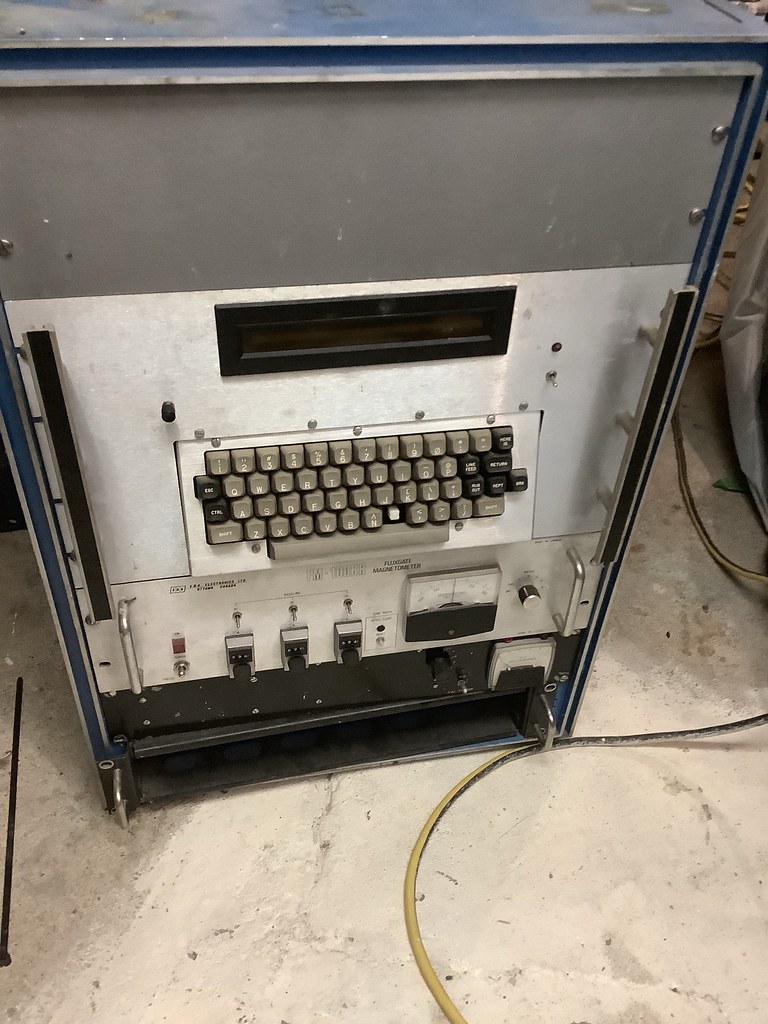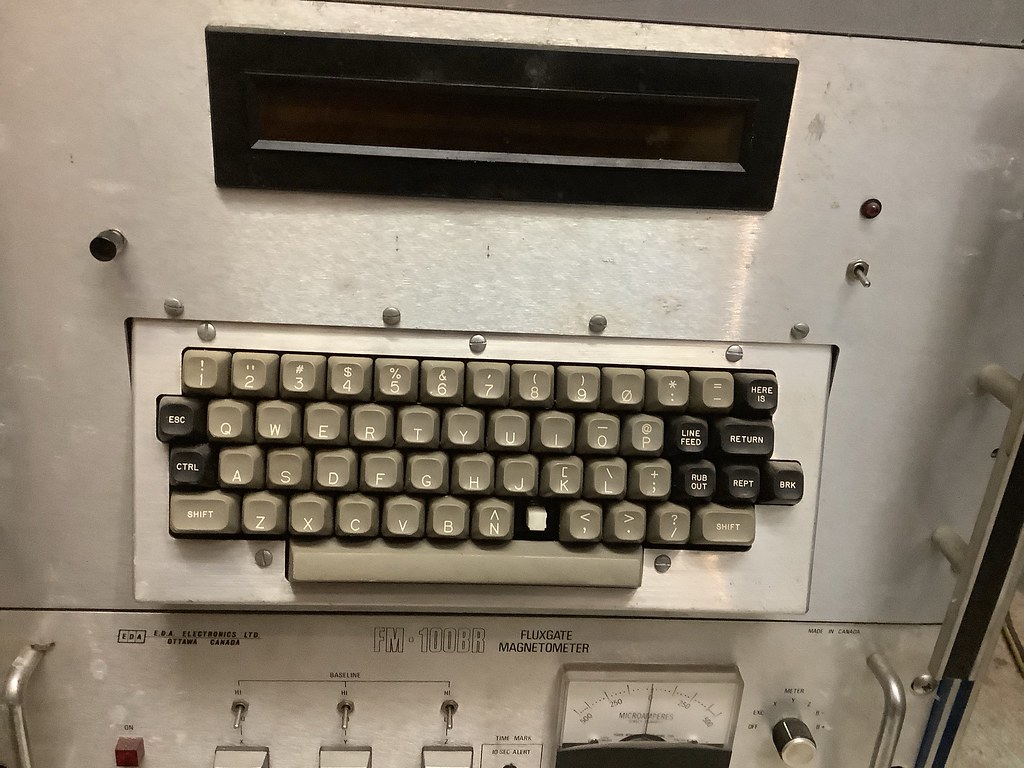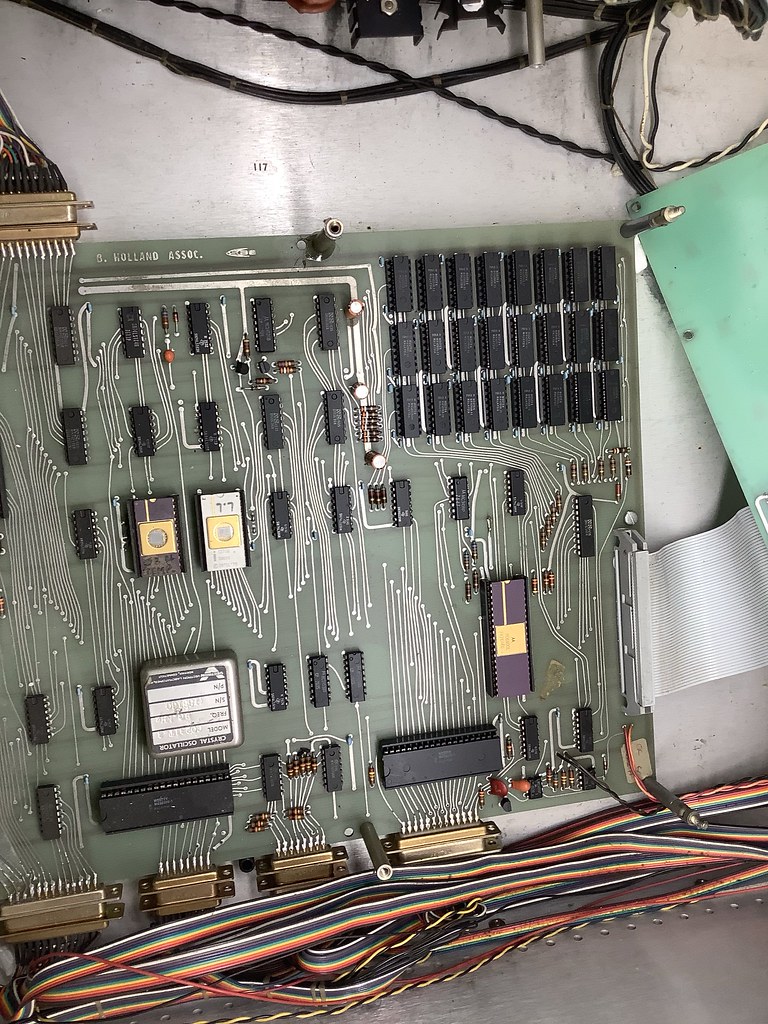1ajs
Experienced Member
came across this system recently so i rescued it curious thing it is.
from discsions on the mailing list facebook and discord it is either part of a system that flew on planes looking for ore bodies oil and gas ect or was custom built for the usgs to mesure the magnetic feild of witch 6 systems where built that went around the world.
https://books.google.ca/books?id=Ja...=y#v=onepage&q=eda fm 100 br fluxgate&f=false
seeing the case in the rack its in u would think this was some beast but then when i opened it its a single board with a analog to digital converter mounted to it and a psu to one side plus a Keytronic keyboard on the front of it and display


back side of the rack

inside the computer case

hidden under the DAC board is a motorola MC6800L cpu dated 76 and a cluster of mostek ram chips date codes of 1975 and 76. not sure whats on the intel eproms.

inside the fluxgate box

this is prolly one of the more obscure things ive come across and happy to give it a home.
the very bottom of the rack has something like a pdu controllor with a nob thats got 6 settings for different x and y z modes?
from discsions on the mailing list facebook and discord it is either part of a system that flew on planes looking for ore bodies oil and gas ect or was custom built for the usgs to mesure the magnetic feild of witch 6 systems where built that went around the world.
https://books.google.ca/books?id=Ja...=y#v=onepage&q=eda fm 100 br fluxgate&f=false
seeing the case in the rack its in u would think this was some beast but then when i opened it its a single board with a analog to digital converter mounted to it and a psu to one side plus a Keytronic keyboard on the front of it and display


back side of the rack

inside the computer case

hidden under the DAC board is a motorola MC6800L cpu dated 76 and a cluster of mostek ram chips date codes of 1975 and 76. not sure whats on the intel eproms.

inside the fluxgate box

this is prolly one of the more obscure things ive come across and happy to give it a home.
the very bottom of the rack has something like a pdu controllor with a nob thats got 6 settings for different x and y z modes?
